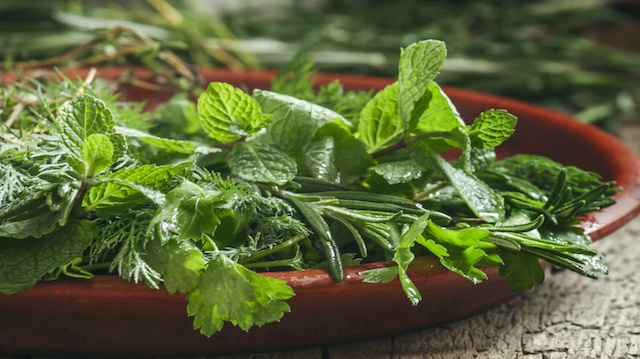
In 2015, the FDA increased the warnings associated with the use of over-the-counter nonsteroidal anti-inflammatory drugs (NSAIDs). Taking these painkillers comes with the increased risk of heart attack and stroke. Many are now questioning the use of painkillers for any reason.
However, you don’t have to go completely pain relief-free, even if you are avoiding NSAIDs. The four herbs listed below have powerful pain-relieving effects that work as well as over-the-counter medication.
Chili
Chili contains an ingredient called capsaicin, which has been shown to fight pain and inflammation. The ingredient is so effective that in 2011 a pain-relieving patch containing capsaicin compounds was released for commercial sale in the European Union and the United States. However, it is not necesssary to purchase the patch to benefit from the pain-relieving properties of chili.
How to use it: Make a paste of chili powder and water. Rub the mixture into sore, aching muscles. The skin will tingle and may redden a bit, but as long as it does not hurt or burn, it will not harm the skin. Within a few minutes, you should feel relief from the pain. Chili is particularly effective in fighting swelling, inflammation and joint pain.
Chamomile
Compounds in chamomile are soothing and anti-inflammatory. Chamomile is effective at relieving minor aches and pains. A study from 2010 published in Molecular Medicine Report found chamomile to be effective at reducing the pain from hemorrhoids, arthritis, ulcers, menstrual cramps and wounds.
How to use it: Create a strong brew of chamomile by adding hot water to chamomile leaves. Allow the mixture to rest for 24 hours. Dampen cotton cloths with the chamomile liquid and apply them directly to the affected area. You can also add some chamomile leaves or tea bags (if you have nothing else) to hot bathwater and use it to soak for an hour.
Clove
Clove has long been used to reduce dental pain. Clove has a mixture of anti-inflammatory and antibacterial compounds that make it ideal for relieving toothache. A 2006 study published in the Journal of Dentistry found that clove oil was even more effective at reducing pain than benzocaine.
 How to use it: Dilute clove essential oil in a carrier oil using a ratio of one drop of clove oil to 10 drops of carrier oil. Gently rub the clove essential oil mixture on the injured area. When the area starts to tingle and feel a bit numb, the clove is working. Alternatively, if you do not have essential oil, you can make a paste of ground cloves and water and apply it directly to the affected area.
How to use it: Dilute clove essential oil in a carrier oil using a ratio of one drop of clove oil to 10 drops of carrier oil. Gently rub the clove essential oil mixture on the injured area. When the area starts to tingle and feel a bit numb, the clove is working. Alternatively, if you do not have essential oil, you can make a paste of ground cloves and water and apply it directly to the affected area.
Lavender
Lavender is an herb that promotes feelings of calm and happiness. Until recently, however, it was not realized that lavender also has pain-relieving properties.
How to use it: Use a drop of lavender oil to remove the sting from bug bites; rub sore muscles with lavender essential oil for gentle pain relief; or diffuse lavender oil to reduce generalized pain. In 2013, a study was published in the journal Anesthesiology and Pain Medicine that analyzed the effect of lavender essential oil on cesarean postoperative pain. In one hospital, women who had just had cesarean surgeries were given lavender oil to inhale, while a control group was given a placebo. The women who smelled the lavender reported significantly lower pain levels than the control group.
Add these four herbs to your medicine cabinet and throw out those risky NSAIDs.
—The Alternative Daily
Sources:
http://www.ncbi.nlm.nih.gov/pmc/articles/PMC3169333
http://www.ncbi.nlm.nih.gov/pmc/articles/PMC2995283
http://www.ncbi.nlm.nih.gov/pubmed/16530911
http://www.ncbi.nlm.nih.gov/pmc/articles/PMC3821145
http://www.fda.gov/Drugs/DrugSafety/ucm451800.htm

